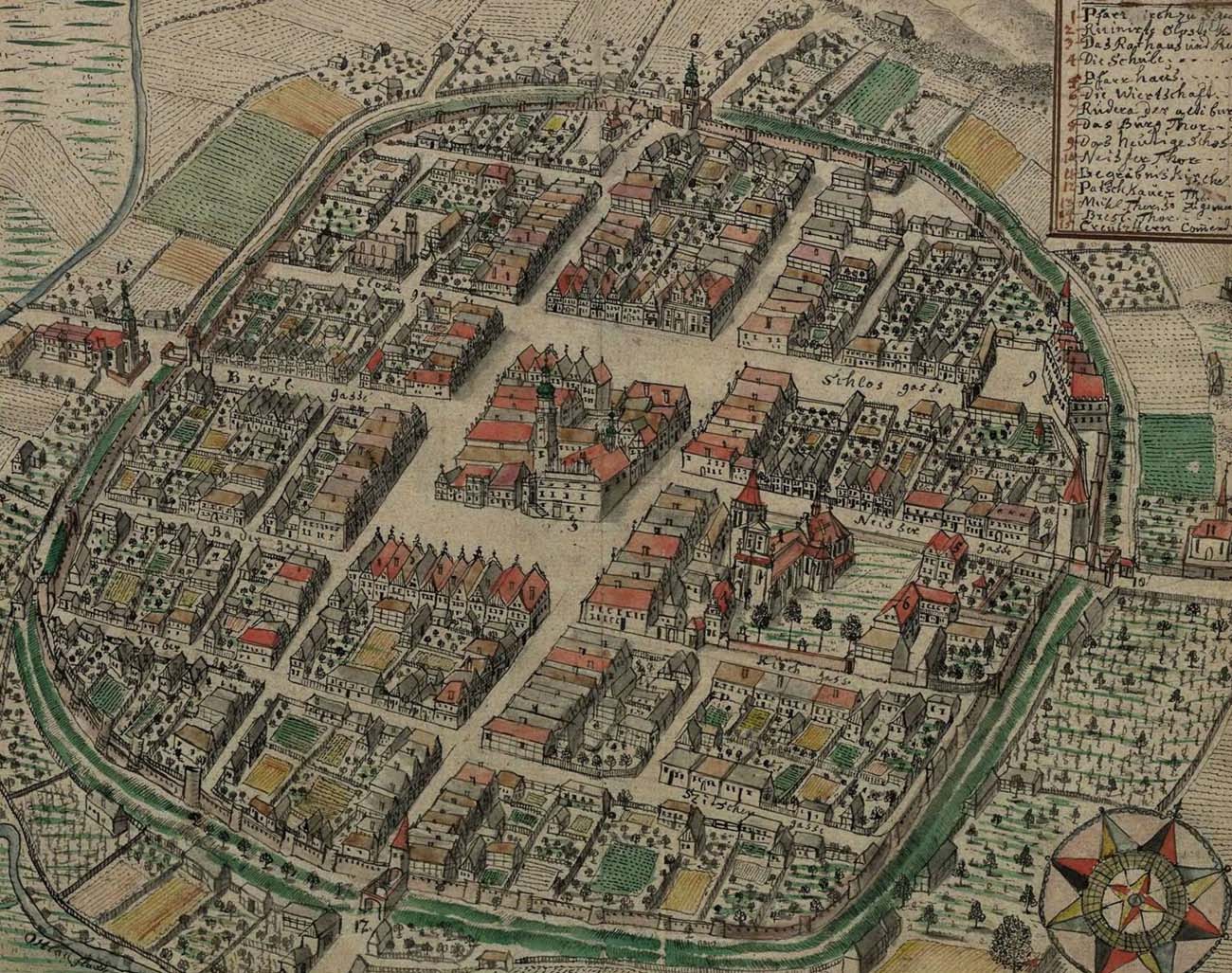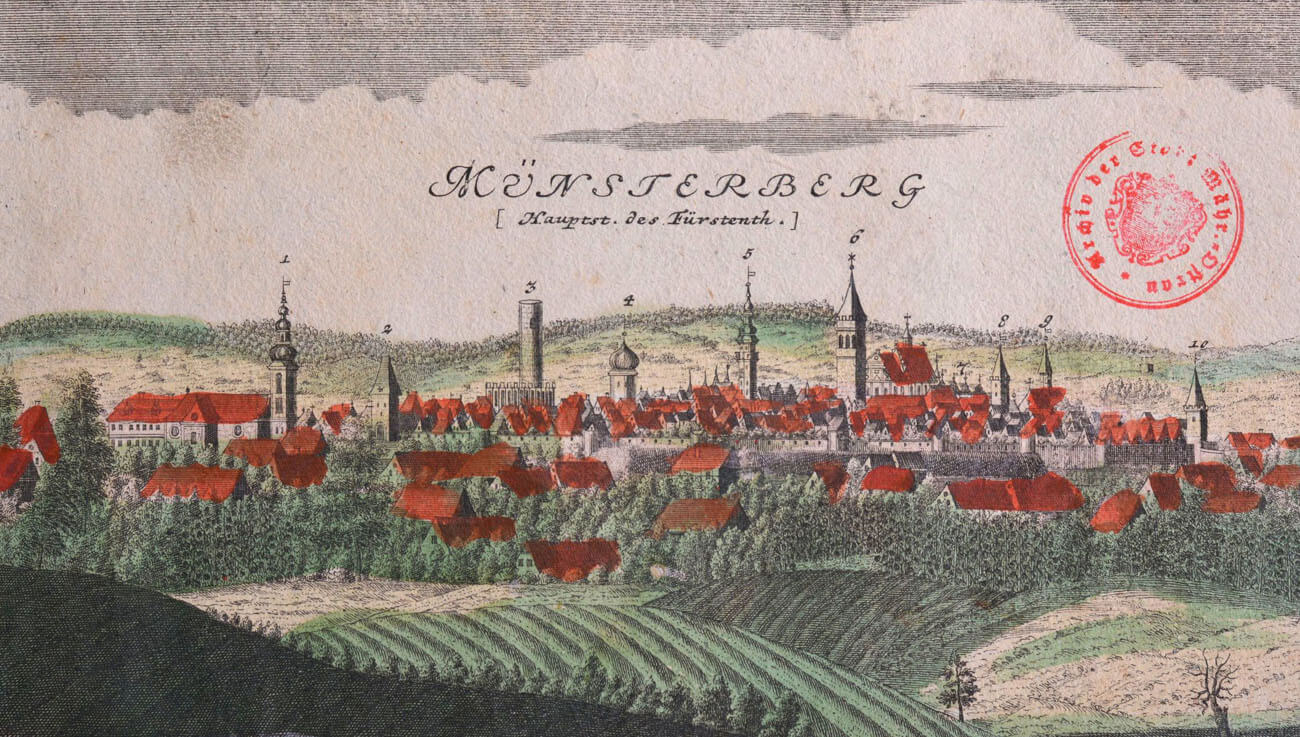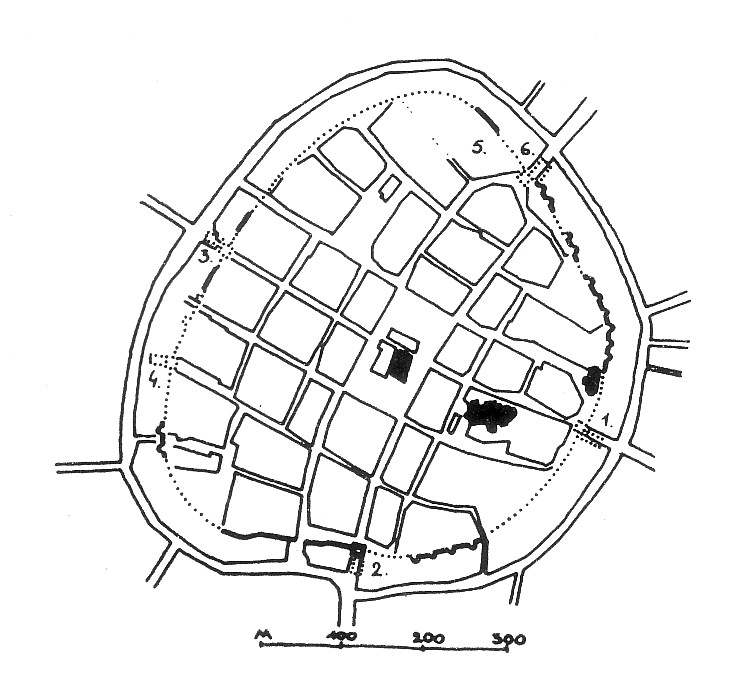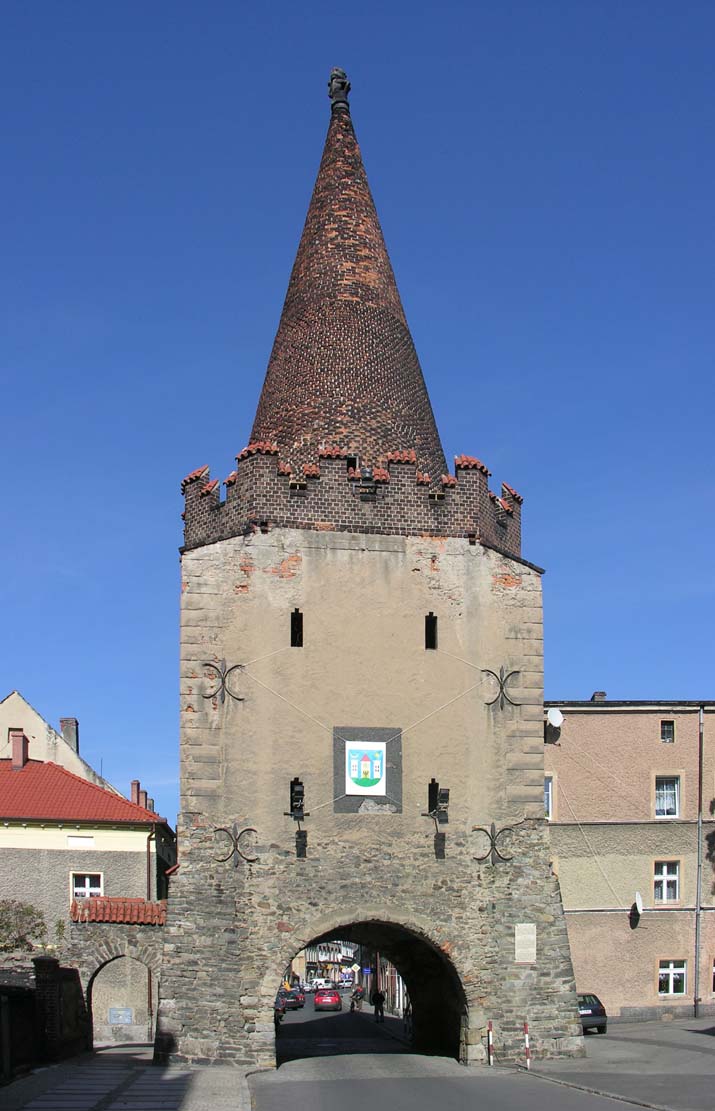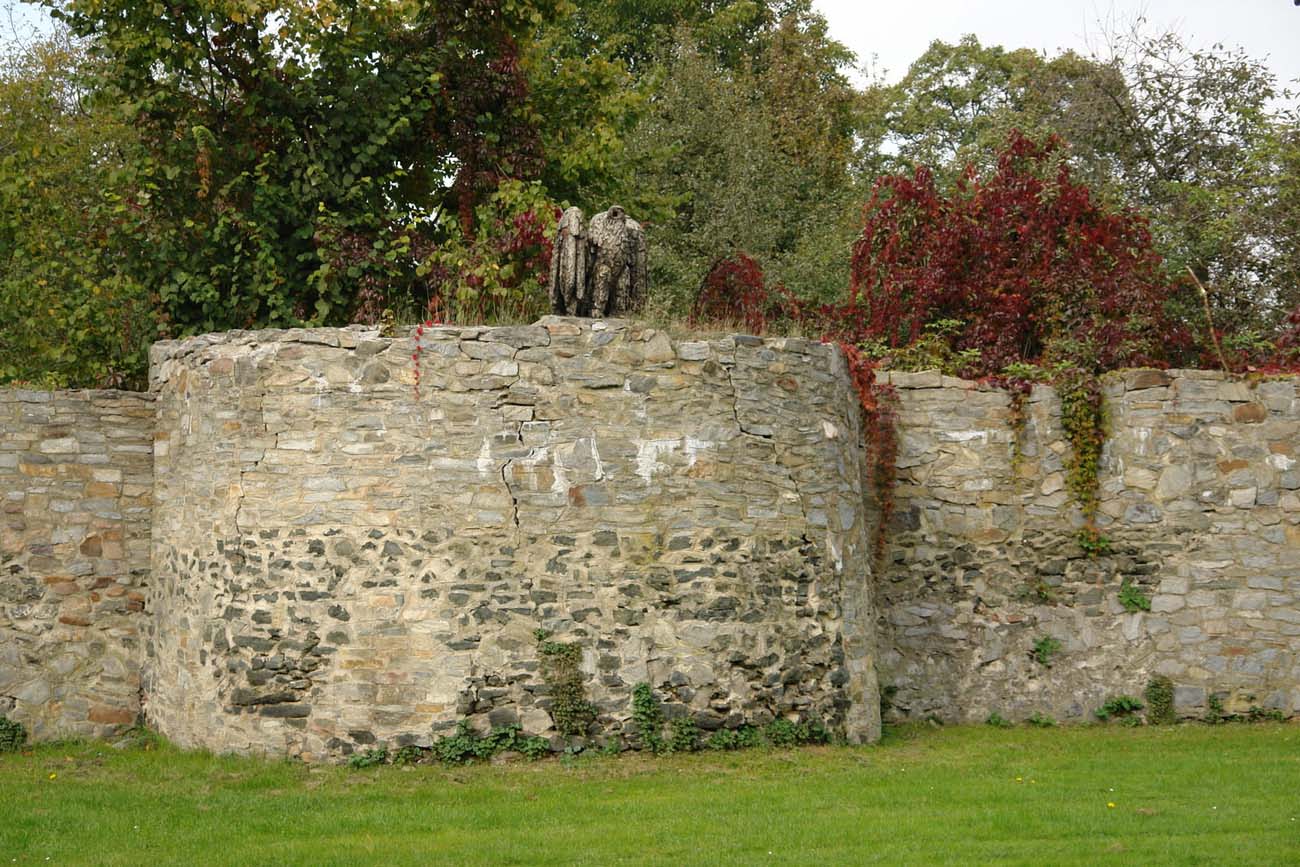History
The town walls of Ziębice (initially, probably until the destruction by the Mongols in 1241 called Sambice, later after the location of around 1250 called Munsterberck, next Münsterberg) were built at the turn of the thirteenth and fourteenth centuries. For the first time they were mentioned in 1336, so it is uncertain whether the town was protected by stone fortifications as early as 1280, during the unsuccessful siege by Bolko of Jawor and Brandenburg army, whether wood-earth fortifications were still providing protection at that time. If the defensive walls were erected a little later, after the reign of Henry IV Probus, it could have been built during the short reign of Bolko I of Świdnica, to whom tradition also attributes the construction of the castle. A little later, around 1388, the town was surrounded by a second moat.
In 1428, the defensive walls were seriously damaged during the Hussite invasion. In the following years of the 15th century they were rebuilt in connection with the spread of artillery and as a result of damages caused by the Hussites. Prince Charles I carried out a thorough renovation of fortifications in the first half of the 16th century.
In the first half of the 17th century during the Thirty Years’ War, medieval fortifications lost their importance as a result of rapid military progress. Despite this, until the eighteenth century they played a role in obstructing the entrance to the town, especially tramps, deserters and robbers. In 1780, at the order of Frederick II, the town moat was filled in, and the area thus obtained was designated for gardens. The reason for this decision was probably malaria, the appearance of which drew attention to the swampy and dirty habitats of mosquitoes, which were in neglected moats. The demolition of the city walls began in the years 1819-1850, when all the gates were destroyed except Paczków Gate, saved by the city council, which indicated its good condition.
Architecture
The fortification ring was founded on a plan similar to an oval. It was slightly varied in terms of height: the main hill in the south-eastern part was occupied by a church, from where the area gently slanted towards the market and further north. An important element was the small Oława River flowing along the north-west edge of the town. Inside, the entire ring of fortifications was surrounded by a underwall street, which facilitated the movement of defenders at the time of danger.
The height of the defensive wall, built of unworked stones, reached about 10-12 meters, while the thickness was about 1.8 meters. In the upper part it was crowned with a wall-walk for defenders, protected by a breastwork with a battlement, and naxt a covered porch. The wall was also reinforced with numerous, quite regularly spaced around the entire perimeter and slightly higher semicircular half-towers (open from the town side). They stood quite close together, every 17-19 meters, while in other Silesian cities it was usually 35-40 meters. The outer defense zone was provided by a moat, doubled since around 1388.
Access to Ziębice was ensured by five gates: Wrocław Gate from the west, Castle Gate from the north, Nysa Gate directed to the east, Paczków Gate from the south and Weaving wicket pierced at the end of the 15th or 16th century, also known as the Mill Gate. The gates were located on the extension of the two main axes of the town intersecting in the middle, on the market place. The Wrocław-PaczkPaczków route ran through them, as well as the road from Nysa to Niemcza with a branch to Ząbkowice. Gate passages were placed in gatehouses, which did not differ significantly in size, but were equipped with simple foregates since the 15th or 16th century.
Current state
Today, the best preserved fragments of fortifications are located in the south-east and east of the town, but they are unfortunately significantly reduced compared to their original form. The upper part of the fortifications with loop holes and the breastwork has not survived anywhere. However, the Paczków Gate is visible, built at the end of the 13th century, but rebuilt at the end of the 15th century.
bibliography:
Atlas historyczny miast polskich. Tom IV Śląsk, red. R.Czaja, M.Młynarska-Kaletynowa, R.Eysymontt, zeszyt 16 Ziębice, Toruń 2013.
Architektura gotycka w Polsce, red. M.Arszyński, T.Mroczko, Warszawa 1995.
Przyłęcki M., Miejskie fortyfikacje średniowieczne na Dolnym Śląsku. Ochrona, konserwacja i ekspozycja 1850 – 1980, Warszawa 1987.
Przyłęcki M., Mury obronne miast Dolnego Śląska, Wrocław 1970.
Zlat M., Ziębice, Warszawa 1967.

